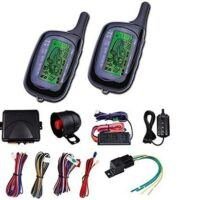A Car alarm becomes a huge disturbance to the environment when it goes off repeatedly without cause. Normally, this can be turned off with the alarm system remote but when it becomes a repeated occurrence, you’ll need to find a long-lasting solution. How to override car alarm system? Knowing how to override a car alarm also helps in situations where the alarm is preventing the car from starting.
Overriding a car alarm system involves a series of steps. These include unlocking your car door, starting the engine, removing the fuse, and as a last resort, disconnecting the car battery. These steps will be elaborated on in the coming subheadings and paragraphs.
Learning how to override your car alarm system will help you avoid embarrassing moments with aggravated neighbors. It’ll also help you to bypass an alarm system that may be preventing you from starting your vehicle.
REASONS WHY CAR ALARM KEEPS GOING OFF
- Low or dead battery
The most common reason for a car alarm to malfunction and start going off randomly is a dead or low car battery. Since the alarm is an electronic device, it receives juice from the battery to function. Once your battery begins to show signs of depletion, the alarm and other devices start malfunctioning.
This is to save power for the car to start. Some advanced car alarms even indicate the status of the car battery. This can look like false random alarms. If you’re in your vehicle and try to start the ignition when this starts, check your battery immediately as it’s likely low. Besides a low battery, there are other reasons why your car alarm is going off randomly.
- Broken Key Fob
Each car alarm system is equipped with a remote key fob for activating and deactivating the alarm system inside the vehicle. This device allows car owners to send commands to the control unit installed in the vehicle.
These commands include locking and unlocking the doors, muting false alarms, and activating smart locks such as an immobilizer. However, since the fob works on a battery, it can run low and begin to malfunction. If you have to input a single command more than once, then it’s time to change the battery. Key fobs are also fragile and can break at the slightest fall.
If your alarm kit has 2 remote fobs, then switch to the alternative. If not, then buy a new key fob. A broken fob is prone to send false commands to your vehicle which will cause it to send loud audible alerts continuously.
- Poor connection
The importance of having the right and stable connections in your car alarm system cannot be understated. You must make sure that the sensors are properly connected to the control unit. Also, check that the wires connecting the alarm to the battery and fuse are in good working conditions. Wrong or damaged connections may cause the alarm to keep going off randomly without cause.
If after changing the car battery the alarm still keeps going off, we recommend inspecting the connections. First, reconnect the sensors. This should solve the problem, however, if it doesn’t, then you may have to replace some of the wires. We recommend hiring a professional for this.
- Improper installation
The most common cause of false alarms right after installation is improper installation. This is usually caused by incorrect wiring, connection, and device compatibility. Before buying an alarm system, make sure it is compatible with your vehicle.
This should come first before your preferences and needs. Wrong installation affects how the control unit communicates with the key fob and sensors. This causes the sensors to send false signals to the control unit which wouldn’t stop blaring loud audible alarms.
- Sensitive Shock Sensors
Shock sensors are installed on the body and tires of the vehicle. They alert the brain of the alarm system about proximity and contact of the vehicle as long as the alarm is armed. However, overly sensitive shock sensors take this function way too seriously and alert the car owners on everything that touches the vehicle.
This can be frustrating, especially at night. Because of so many false alarms, some car owners no longer pay attention to their alarm systems. While this is understandable, it has led to more car theft because thieves now use it to their advantage.
They intentionally set the alarm off, and swing into action once the car owner disables the alarm. This is why you need to recalibrate the shock sensors if it’s too sensitive. Most alarm systems have a guide on how to reduce sensitivity. You also contact the manufacturer if your product is still covered under warranty.
- Corroded Battery
While advanced alarm systems are designed to alert drivers to a low car battery, a corroded battery can deceive the alarm to send false alarms. If you’re sure that your car battery has a charge, then check the battery terminals. If you find them rusty, clean or replace them with new terminals. However, make sure you disconnect the battery before working on the terminals.
- Accidental Alarms
It is possible to accidentally set off a car alarm system. Nowadays, the buttons of the key fob are very accessible and are not as hard as before. This improves usability but increases the risk of pocket dialing. This is worse for car owners who wear tight clothes.
Accidental alarms are also caused by carelessly keeping the fob for children to use. A kid, unaware of the use of each button, will turn it into a toy, thereby setting off your alarm at the speed of light. You can attach the key fob to a key holder and hang it on your pants or store it in your purse when not in use.
- Dirty Hood Latch sensor
A hood latch has a sensor that tells drivers when the hood is open or closed on the dashboard display. This sensor also sends signals to the vehicle alarm system which lets off audible alarms when the hood is left open. However, many drivers have reported hood latch alarms even when the hood is tightly closed.
This is either a result of damage or dirt. Check that the hood latch sensor is highly fixed and working in good condition. If that’s not the case, then remove the surrounding dirt. To do that, disconnect the battery terminals before using microfiber to remove the dirt on the latch sensor.
STEPS TO OVERRIDE CAR ALARM SYSTEM
Learning to override a car alarm system helps you to stop false alarms and helps you to override the security of your car when it prevents the car from starting. Here are 5 ways to help you successfully override a car alarm system.
- Understanding the car alarm
Before you proceed to the actual steps, it is important that you understand the makeup of your alarm and how it functions. Some alarms that you consider false are perfectly normal in the manufacturer’s guide. So, take out your guide, dust it, and read through it. Learn the location of each sensor in the vehicle and how it communicates with the key fob and brain of the security system.
- Unlock car door
The first and simplest way to override a car alarm system is by simply opening the car door. You’ll need to insert the key into the hey hole or unlock the car with the key fob. This should immediately disable the alarm and reset it. What if my car is already unlocked? Then lock the door and unlock it with the key fob.
- Start the engine
The second way to override a car alarm system is by starting the vehicle. Insert the key into the ignition hole of your vehicle and try to start it. This sends a message to the brain of the alarm system that the car owner is already inside the vehicle. Once the communication is complete and successful, the alarm immediately turns off and resets.
- Disconnect the fuse
As an electronic device, you’ll need to connect the alarm to the fuse box in your vehicle. The alarm fuse is not protected from damage. So, you’ll have to check the state of the fuse. If the fuse is blown out, then you’ll need to replace it with a new one.
But to override the alarm system, simply pull out the fuse. This cuts its power source immediately, leaving your car vulnerable at that point. There are several fuse boxes in a car. One is located close to the steering column and another in the engine. If it’s an OEM installed alarm, then check the fuse box on the left side of the steering column, but if it’s an aftermath solution, then check the engine.
In conclusion, if all the above means fail, then disconnect the negative terminal of your car battery. This kills the alarm immediately. Wait for 2 minutes before reconnecting the battery for a complete reset of the alarm.







